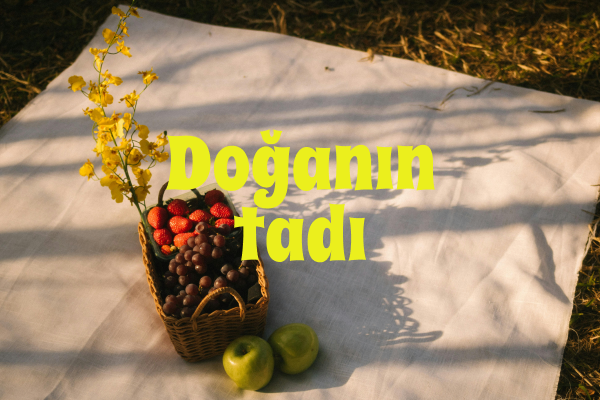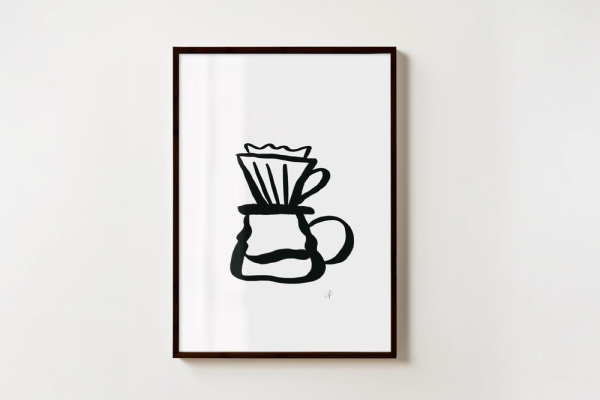Journey into the History of Coffee
We are starting a new series of articles about the adventure of coffee at Kahvebi. We will try to convey to you the adventure of coffee from harvest to cup. But first, we would like to explain how coffee entered our lives. In this article, we will tell you about the historical journey of coffee.
Coffee is a passion. It's not just a drink, it's also a social experience. It is an element that brings different cultures together and strengthens social ties. It has emerged in various forms in different geographies and societies throughout history.
The story of coffee, which plays an important role in many cultures, dates back to the Kaffa region in Ethiopia. According to legend, the goats of Kaldi, an Ethiopian monk who lived in the 9th century, gained energy by eating coffee beans. Monk Kaldi, noticing this increase in energy, collected the seeds and tried to make a drink from them. This event took the first steps in the history of coffee.
However, coffee gained its real popularity in the Arab world. Coffee began to be grown in Yemen in the early 15th century. When coffee beans were first roasted and drunk in Yemen, this beverage quickly gained popularity. Coffee spread from Yemen to other Arab countries and became an important social activity, enabling the community to come together in coffeehouses.
Introduction of coffee to the Ottoman Empire
Coffee entered the Ottoman Empire through Yemeni merchants. Initially, coffee was accepted as a means of social interaction within Arab society. Since the first coffeehouse opened in Istanbul in 1554, coffee has become a beverage that brings communities together and encourages social interaction.
In the Ottoman Empire, coffee went beyond being just a beverage and turned into a tool of ritual and social interaction. Coffeehouses became centers of information exchange, discussions and social interaction in Ottoman society. Drinking coffee, coming together and chatting became an indispensable part of Ottoman culture.
When coffee began to spread throughout Europe in the 17th century, it quickly became a symbol of luxury and elegance, and coffeehouses quickly gained popularity there as well. Particularly in England, France and the Netherlands, coffeehouses became meeting points for intellectuals, artists and merchants . During the Enlightenment, philosophers, writers and artists gathered in coffeehouses and exchanged ideas. During this period, coffee became a mechanism where those hungry for knowledge and intellectuals came together. While coffee became a symbol of luxury and elegance in Europe, coffee culture spread rapidly in these regions.
Coffee production became widespread in Latin America in the 17th century. Especially South American countries such as Brazil and Colombia began to dominate the world markets with their coffee plantations. In these regions, coffee farming has become not only an economic activity but also a cultural heritage and source of livelihood. Coffee farmers have maintained the coffee culture by harvesting coffee using traditional methods and using that income for their families and communities. Today, most of the coffee production is carried out on small coffee farms run by families.
The 20th century was a period in which coffee culture evolved rapidly. The invention of the espresso machine, in particular, revolutionized the coffee world. During this period, coffee was enriched with different brewing methods, coffee varieties and specialty coffee shops around the world.
Coffee culture today
Coffee Culture has gained great diversity and richness, especially through specialty coffee shops, micro coffee roasters and coffee festivals. Increasing demand and interest have also brought issues such as sustainable coffee production and fair trade practices to the agenda.
The history of coffee has influenced many cultures from its beginning to the present day and has been a unifying force around the world. Today, coffee culture continues along with the beverage's social, cultural and economic influences, and each cup of coffee represents the junction of the past and the future.
Specialty coffee shops, the creativity of baristas, different coffee beans and brewing methods have turned the coffee drinking experience into an art. Additionally, with the influence of social media, platforms full of coffee posts and coffee-related content have made coffee culture even more popular.
Preparation of Coffee
Coffee making has been carried out with various equipment throughout history. First, it was made using a coffee pot. Coffee pot is a traditional equipment used for brewing coffee. However, coffee preparation methods have evolved and diversified over time.
- In the 19th century, the "moka pot", known as the first coffee machine, appeared. This equipment, which came from Italy, heated the water from the bottom and produced coffee at the top. The moka pot is a method that is still popular today and has become an indispensable item among coffee enthusiasts.
Coffee beans are the basic element that determines the taste of coffee. There are two main types: Arabica and Robusta. Arabica beans have a smoother and more complex flavor profile, so they are often used in premium coffees. Robusta beans have a stronger taste and are generally preferred in coffee blends.
Coffee beans can be purchased ground or whole. Using freshly roasted beans is the key to getting the best taste of coffee. As a coffee enthusiast, it is important to pay attention to the quality of the beans.
Coffee has become not just a beverage, but also an element that unites cultures, brings people together and encourages social interaction. Each cup carries a story, and these stories are shared, rewritten and given new meanings among coffee lovers around the world. Coffee culture is constantly evolving in connection with its history and occupies a special place in people's lives.





